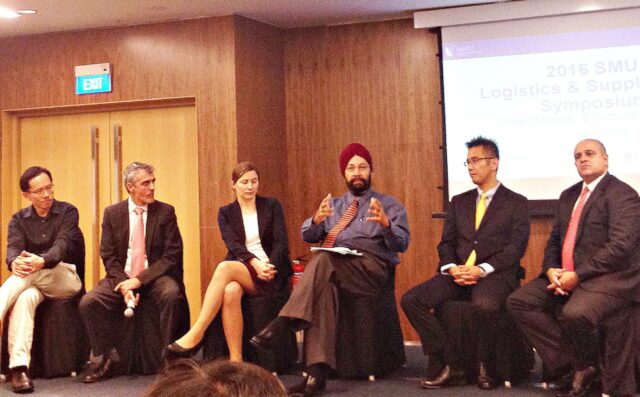The World Bank estimates that by 2025, each urban resident will produce an average of 1.42 kg of municipal solid waste per day—more than twice the average ten years ago—because our industrial economy is largely based on a linear model of resource consumption that follows a ‘take-make-dispose’ pattern.
The circular economy, on the other hand, is designed to be zero-waste, or at least, one that produces as little waste as possible. Not only does it promise production cost savings in the long run, it also equals less dependence on our fast-depleting natural resources.
Notably, logistics plays a fundamental role as an enabler for the circular economy, according to speakers at the 2016 Singapore Management University (SMU) Logistics & Supply Chain Symposium: Urban Mobility & Circular Economy. The event, which took place on March 7, 2016, was co-organised by SMU, the Fujitsu-SMU Urban Computing and Engineering (UNiCEN) Corp Lab, and the DHL-SMU Green Transformation Lab (GTL) and was moderated by CILT Singapore’s Karmjit Singh:
We are using too much resources. How do we save the planet? [How do we] use less resources to produce more? This requires major rethinking at the design stage; that’s where the challenges lie.
